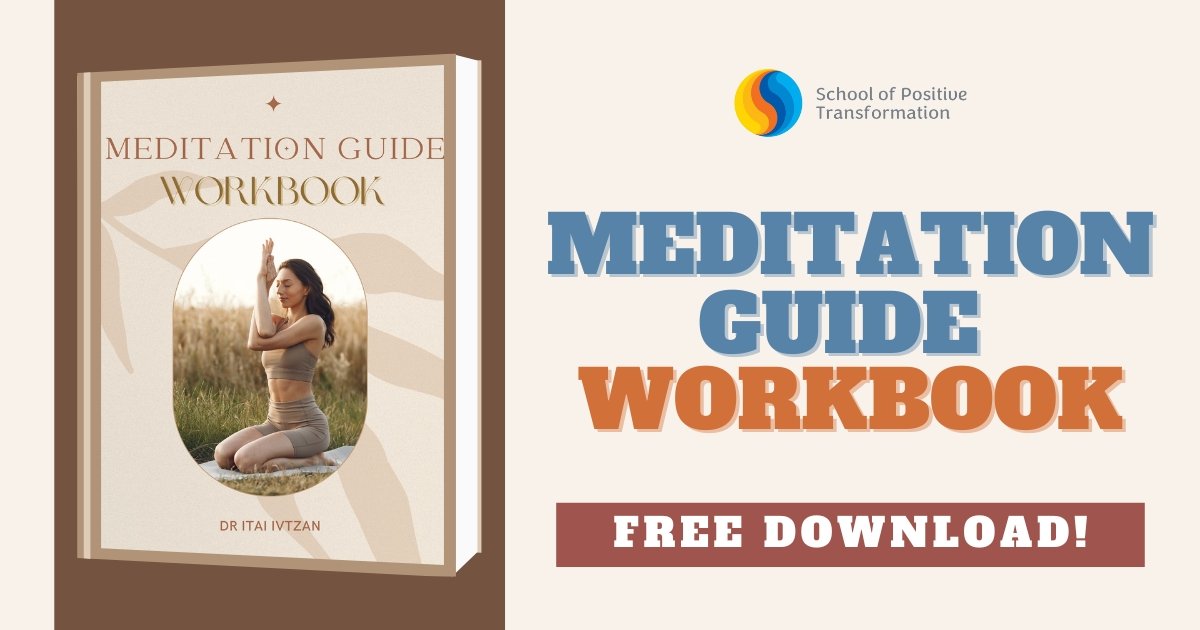Teach Meditation— A Guide for Finding the Right Meditation for You
In this type of right meditation, you’re opening yourself up to receiving love as well as sending it out. You can start by imagining someone you really love and the loving phrases they might say to you.
“Where do I start?”
This is a question that a meditation teacher is sure to have encountered a lot of times. There are a lot of different kinds of meditation and as a beginner, it is hard to decide which particular meditation you’d choose.
The simplest answer to this question that experienced meditators would agree on would be that: there is no such thing as the most effective type of meditation— because it’s different for everyone.
If you are looking into getting a meditation teacher training to be able to teach meditation, this article is particularly helpful for beginner meditators to learn about an overview of some of the meditation types and techniques.
This Article Includes:
Different Types of Meditation
Specific Techniques for Meditation
What kind of meditation is right for me?
Can Meditation be Dangerous?
There are hundreds of meditation techniques across different traditions, religions, and spiritual disciplines, and the only way to find what’s best for you is for you to try them and see what you like and prefer.
Before you continue you might like to consider our free worksheet on exploring “Meditation Guide”. Please download this worksheet here.
 Different Types of Meditation
Different Types of Meditation
This guide will give you the most popular and generalized categories of meditation. See if anything interests you, that way you can look into it further and see if it works for you.
Involvement of a meditation teacher: Guided vs. Unguided Meditation
This might be the first category you might want to decide on if you want to start a daily meditation practice.
A guided meditation will involve a meditation teacher who will be the one to guide you through the basics of meditation. This type of meditation is particularly useful for beginners because the teacher is experienced and trusted, and their guidance can be key to helping those who are new to the practice get the most out of the experience. A guided meditation follows a certain format:
- The meditation teacher explains the thought process during the practice.
- They will then guide you through a particular meditation technique (some of which I will discuss in the next section).
- After the practice, they will suggest ways on how you can integrate this technique into your everyday life.
You can check a script of a guided meditation sample here.
In an unguided meditation (also known as silent meditation) — you meditate alone, without someone else explaining the process. For some people, this kind of meditation goes as simple as sitting in a corner and quietly paying attention to the body, thoughts, or by the use of other specific techniques for a set period.
 Results-Based: Calming vs. Insight Meditation
Results-Based: Calming vs. Insight Meditation
Meditation can be classified into the kind of result or intention that you are going for, you can choose between calming and insight meditation.
A calming meditation aims to develop a peaceful, more quiet state of mind and an improved focus. Calming meditation practice is distinguished by the kind of focal points that have; this meditation usually puts your attention to either:
- your breath,
- a physical object,
- a mantra,
- physical sensations,
- a visualization
And whenever you get distracted or when your thoughts start to wander, you are to return to that focal point to help you keep calm. This meditation trains your focus.
On the other hand, insight meditation goes to set an intention to transform their minds through the development of character and qualities like love, compassion, and wisdom. Insight meditation uses breath as a focal point, but it is distinguished from calming meditation as it lets your mind wander and encourages you to be fully aware of your mental and physical sensations that you may encounter during the practice.
BUT HERE’S THE FUN FACT: Meditation need not be just the one of the other, some meditations can give both results and help us find calmness and mental quiet while also improving feelings of well-being, happiness, and empathy for others.
Specific techniques for Meditation
Focused attention. Now, this technique has been mentioned in the last section and is a popular technique of different meditation forms. This is fairly straightforward because it uses the breath (the inhaling and exhaling) to focus attention, keep the concentration, and maintain alertness. And when your mind starts to wander? Simply return to the breath.
Body scan. You may not notice but there are times that our body and mind are not in sync. You may find yourself doing one thing as your mind is elsewhere. This particular technique synchronizes the two by making yourself do a mental scan from your head to your toes. As you are doing the mental body scan you acknowledge and bring your focus on any discomfort, tensions, aches, or sensations that you might be feeling in the different parts of your body.
Noting. Whenever your mind wanders or as you lose your focus on your breath (or object of focus), this technique simply involves “noting” or acknowledging the specific thought or emotion that first distracted you. The act of calling yourself out and identifying the particular cause of distractions creates a bit of space and signal to let go and restore the lost awareness. This mindfulness technique also teaches you about your thought patterns, tendencies, and conditioning that you may want to address later.
Visualization. This meditation technique is particularly helpful when you plan to teach meditation to kids. It involves picturing something or imagining someone in your mind — this becomes the object of focus instead of the breath. Not everyone finds this technique easy, but when you think about it can be done effortlessly as it is no different than vividly recalling the face of an old friend or a childhood favorite place. With such a specific visualization, the individual should also look into any physical sensations that they feel as they are doing the meditation.
Loving-kindness. This technique, unlike the visualization technique, does not need that you fully remember a face or place. It involves focusing on imagining different people — those you know and those you don’t, those you like and those that you don’t like. We direct positive energy and goodwill first to ourselves, and then, as a ripple effect, it involved encompassing others in the love that comes from yourself. This technique helps us let go of the unhappy feelings we may be experiencing. You can find a loving-kindness meditation script here and a sample video below.
 Skillful compassion. Similar to the loving-kindness meditation technique, this one involves focusing on a person you know or love and paying attention to the sensations arising from the heart. By opening our hearts and minds for the benefit of other people, we have the opportunity to foster a feeling of happiness in our mind.
Skillful compassion. Similar to the loving-kindness meditation technique, this one involves focusing on a person you know or love and paying attention to the sensations arising from the heart. By opening our hearts and minds for the benefit of other people, we have the opportunity to foster a feeling of happiness in our mind.
Resting awareness. Rather than focusing on the breath or visualization, this technique involves letting the mind truly rest; thoughts may enter, but instead of distracting you and pulling you away from the present moment, they simply drift away.
Reflection. This technique invites you to ask yourself a question: perhaps something such as, “What are you most grateful for?” (Note that asking yourself a question using the second person — you — will discourage the intellectual mind from trying to answer it rationally.) Be aware of the feelings, not the thoughts, that arise when you focus on the question.
What kind of meditation is right for me?
I hope that by now you have an answer to this. Because if you don’t well.. all I can say is that the right meditation for you is actually: the meditation practice that works for you.
Are you ready to find the meditation practice that suits you best and brings more peace into your life? Download our Meditation Guide Workbook for free here and start your journey toward a more mindful and balanced you!







